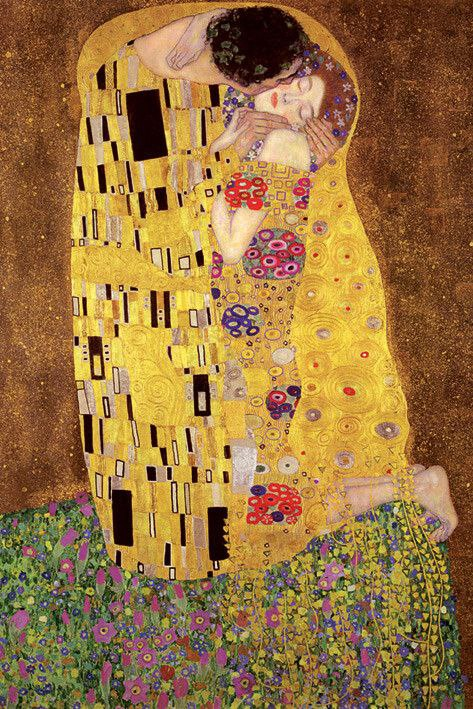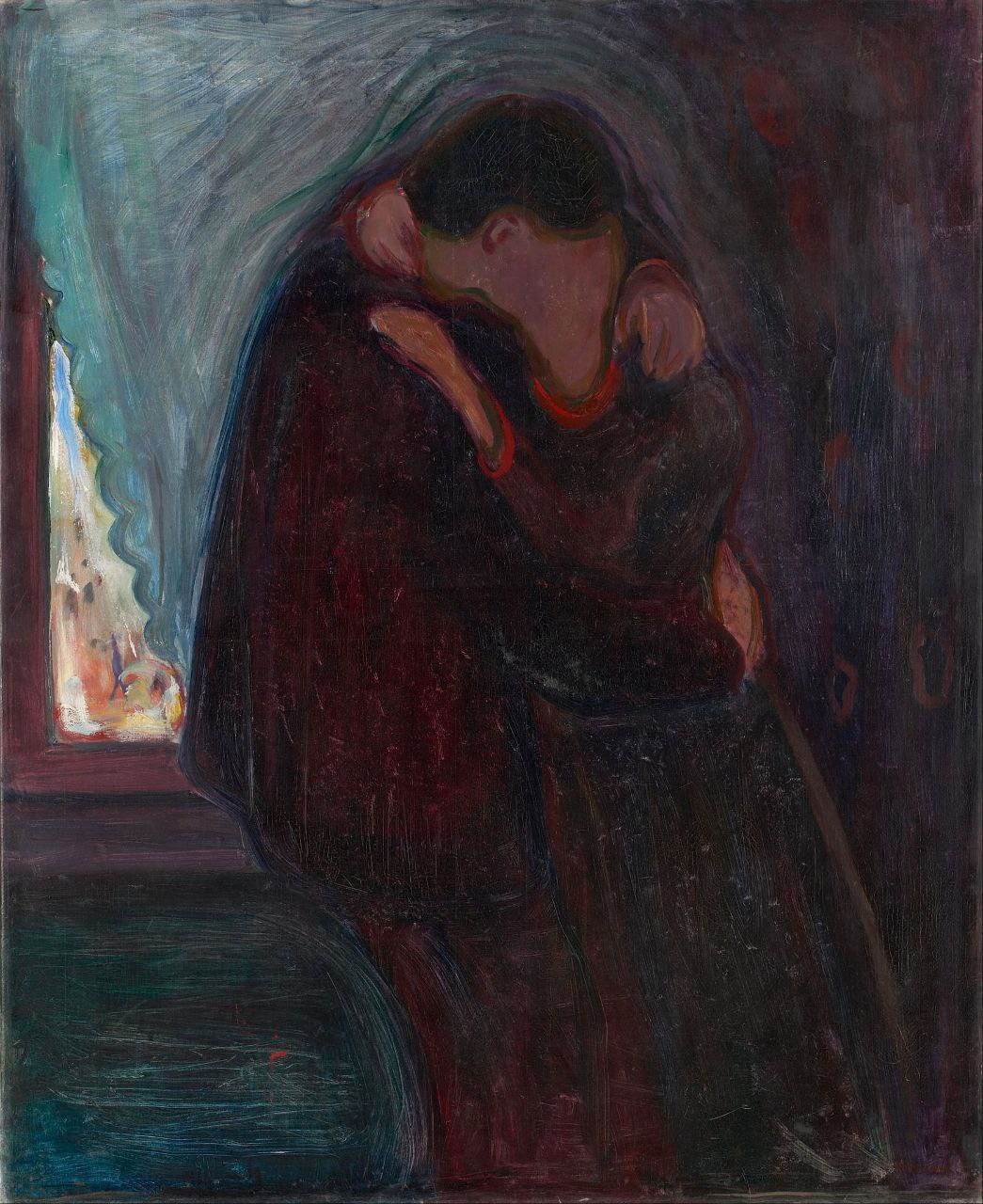Art has always been a method of creative self-expression, with painting being one of the brightest examples. The author encrypts messages about their worldview in their works, using lines and colors as vessels for their creative ideas. No painter’s perspective is identical, thus, different painters may have divergent views on the same matters. Gustav Klimt’s (1908) and Edvard Munch’s (1897) symbolist works, both of which are called The Kiss, are prime examples of that. While Klimt’s art is bright and flamboyant, Munch’s painting is dark and muted, which explains the painters’ outlook on romance.
Gustav Klimt’s Kiss is a manifestation of love’s triumph over the uncertainty of the world. The painting depicts a couple embracing, with the man bent over the kneeling female figure, kissing her on the cheek. The man is wearing a golden cloak, which he is wrapping around the woman, and she is wearing a yellow dress. Beneath them is a hill overgrown with colorful flowers, and the background of the painting is ocher-brown.
The distinguishing style of Klimt’s Kiss is in light and details, conducting the cheerful attitude that the author has toward romance. The painting shows only the woman’s face, while she receives a kiss from the man. At first, it may seem that he hovers over the woman, implying that he has power over her. However, it is clear that the woman appears smaller only because she is kneeling – if she was standing, she would be as tall as the man. This detail demonstrates Klimt’s attitude toward women: while some might think they are interfering with men, the two are equal.
The iconography of the painting tells a story of masculinity and femininity while leading the audience to the times of Art Nouveau’s popularity. The author stylizes dark geometric ornaments on the man’s cloak to symbolize strength and vigor, associated with masculinity. To indicate femininity, the painter embeds the woman’s dress with floral patterns, similar to those on the ground under the couple. This stylistic choice may imply the author’s belief about the inherent connection between women and mother Earth. The painter uses the style of Art Nouveau to create the couple’s clothes, explaining its over-decoration and extravagance. Thus, Klimt’s Kiss represents the author’s approach to love and sex –romantic relationships must be mutually enjoyable, equal, tender, and cheerful.
Edvard Munch’s Kiss, on the other hand, tells a different story. Unlike Klimt’s, Munch’s style is predominantly dark and muted colors. The main focus of the painting is an embracing couple standing in a room lit through a slightly open curtain. Their faces are merged, and both of them are wearing black clothes, with the only bright accent being the woman’s red jewelry. The woman is leaning onto the man, and he is holding her close to his chest.
The dark theme of the painting allows to make assumptions about Munch’s attitude toward love. Munch sees the romantic connection as a weary process, which is represented through the iconography of the painting. The blending of the couple’s faces demonstrates Munch’s belief that love makes one lose their individuality. The embrace symbolizes the destructive and despondent type of love, thus the dark styling of the art. The only bright spot in the entire painting is a small portion of the window through which the audience can see the city. This way, Munch stylistically shows that the world outside romance is more vivid. Spots that are less bright yet still prominent on the dark background are the woman’s jewelry, which may suggest that she did not fully abandon the outside world yet. However, her face is merging with the man’s, indicating that she will inevitably lose her identity.
The way the woman is leaning onto the man might indicate Munch’s attitude towards gender roles. While Klimt depicts the woman kneeling, having full potential to be taller than the man if she stands up, Munch shows the woman as the one who needs assistance and support. It demonstrates the author’s belief in the inherent power of masculinity, which females need to feel protected and guided.
To conclude, Kisses by Gustav Klimt (1907) and Edvard Munch (1897) depict the painters’ attitudes toward love through their styles. While Klimt sees it as a joyful connection between two equals, Munch perceives romance as burdensome and scary. The paintings give the audience a profound insight into the authors’ minds through symbols and the use of shades, details, and composition.

